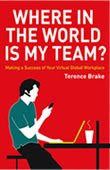I came across a story today (in an AFCEA Intelligence blog) that relates to an abiding interest: Language, Context, and Meaning. Here it is:
A biker is riding by the zoo, when he sees a little girl leaning into the lion's cage. Suddenly, the lion grabs her by the cuff of her jacket and tries to pull her inside to slaughter her, under the eyes of her screaming parents.
The biker jumps off his bike, runs to the cage and hits the lion square on the nose with a powerful punch. Whimpering from the pain the lion jumps back letting go of the girl, and the biker brings her to her terrified parents, who thank him endlessly.
A reporter has seen the whole scene, and addressing the biker, says - Sir, this was the most gallant and brave thing I saw a man do in my whole life.
- Why, it was nothing, really, the lion was behind bars. I just saw this little kid in danger, and acted as I felt right.
- Well, I'll make sure this won't go unnoticed. I'm a journalist, you know, and tomorrow's papers will have this on the first page. What motorcycle do you ride?
- A Harley Davidson. The journalist leaves.
The following morning the biker buys the paper to see if it indeed brings news of his actions, and reads, on first page:
BIKER GANG MEMBER ASSAULTS AFRICAN IMMIGRANT AND STEALS HIS LUNCH
The headline is ‘accurate’, but totally misleading. Accurate and misleading! The problem is with the representation (or rather misrepresentation) of the data. Context is lacking, but knowing the context of the event was a zoo wouldn’t really create a more truthful picture. Looking at the wider context of modern journalism and the newspaper industry might give us a little more insight, but not much.
The problem is that we are all at the mercy of those who create the representations. This is why my skepticism antenna go on full alert when I hear a term like evidence-based. You’re going to have to tell me a whole lot more about why the data was collected, who funded the project, and how the data was gathered. You might need to let me see and explore the data for myself without your contextual spin.
The root of the problem is that we live in the Age of Propaganda. Spin is not limited to politicians, but is rife throughout our culture. Misrepresentation and hype are not the sole province of PR, advertising, marketing, and pseudoscientists, but are endemic in human relationships. In so many of our business – and even personal - communications we have adopted the language of ‘strategy’, ‘tactic’, and ‘technique’.
And so, in our collaborations let’s not just be ‘accurate’, but truthful (if that sounds old fashioned to you, we should talk). Let’s not waste time and effort in playing language games. Let’s challenge doublespeak (“language that deliberately disguises, distorts, or reverses the meaning of words” - source – Wikipedia), hyperbole, manipulative phrasing, important sounding – but meaningless – jargon, bias, euphemisms, and manipulatively emotional allusions that give us credibility by association – whether deserved or not.
The story about the biker could be read as a joke, and as such, it’s a pretty good one. It could also be read as an object lesson for us all. Am I being naïve? Sure, but naivety can open up spaces in which we can freshen up our thinking and conversations; spaces that experience would ignore because they are ‘unrealistic’.
One final word: When I did a web search about the joke, it was interesting how different groups had shape-shifted it to fit their own agenda. Instead of just a biker, I saw “republican biker’, a ‘right wing biker’, an Israeli, a US Marine, and Canadian soldier!


















